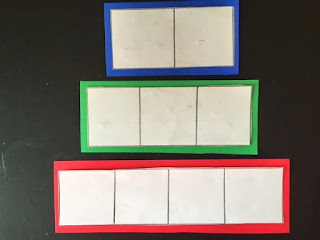RIGHT
Focus on the right hand because then what is “left” over will be their left.
Bracelet
Let children make bracelets out of pipe cleaners and wear them on their right hand. Throughout the day call attention to their right hand…right ear…right leg…right foot, etc.
Lotion
Rub lotion or scented lip balm on each child’s right hand.
Flag
Trace around your right hand on construction paper and cut it out. Place it near the flag so children can visually match up their right hand and then place it over their hearts.

Poem

Poem
Hold up your hands and stick out thumbs and index fingers as you say:
Which is my left? Which is my right?
Sometimes it’s hard to tell.
But when I stick my thumbs out straight,
My left will make an “L.”

Which is my left? Which is my right?
Sometimes it’s hard to tell.
But when I stick my thumbs out straight,
My left will make an “L.”

Left From Right (Anthony Corbo aka “Mr. Kindergarten” taught me this song.)
(Tune: “Mary Had a Little Lamb”)
I want to learn my left from right,
Left from right, left from right.
I want to learn my left from right,
I try with all my might.
The left hand makes the letter L,
Letter L, letter L.
The left hand makes the letter L,
Hurray, now I can tell!
Right & Left
(Tune: “Mary Had a Little Lamb”)
I want to learn my left from right,
Left from right, left from right.
I want to learn my left from right,
I try with all my might.
The left hand makes the letter L,
Letter L, letter L.
The left hand makes the letter L,
Hurray, now I can tell!
Right & Left
Teach children this song to the tune of “Up on the Housetop.”
Here is my right hand way up high.
Here is my left hand touch the sky.
Right and left and roll out of sight.
Now I know my left and right.
Note! Hand dominance is established when either the right or left hand is consistently used for writing, eating, or throwing a ball. Most experts claim hand preference begins in preschool years and that by kindergarten there is a preferred hand.
Here is my right hand way up high.
Here is my left hand touch the sky.
Right and left and roll out of sight.
Now I know my left and right.
Note! Hand dominance is established when either the right or left hand is consistently used for writing, eating, or throwing a ball. Most experts claim hand preference begins in preschool years and that by kindergarten there is a preferred hand.





































